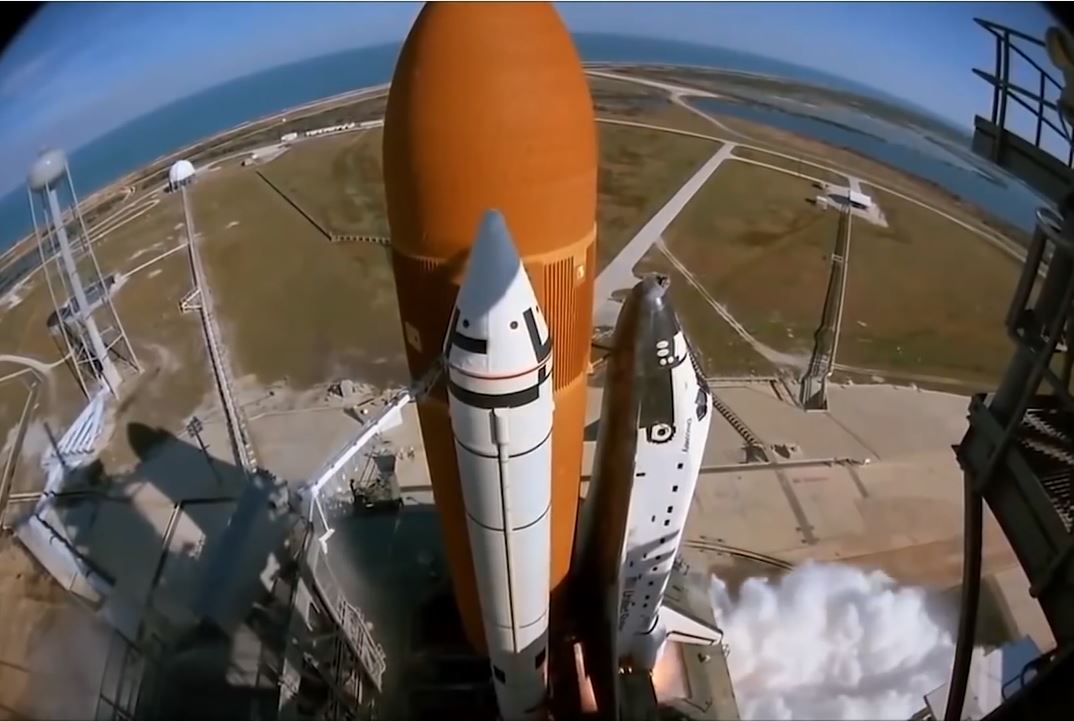When the space shuttle was announced in 1972 it was seen as the space vehicle to make low earth orbit space travel and living in space an everyday reality.
But in hindsight many now believe that it was a failed project that was hamstrung by lack of funding and interest by government and sky high expectations from NASA that led them to sideline safety to ensure scheduled launches continued on time in order to secure future funding.
Instead of expanding man’s horizons, it in fact limited them and stopped the development more effective, safer forms of both manned and unmanned space transport. It ultimately become the deadliest space vehicle in history and more expensive than the expendable rocket systems it was meant to replace.
But wasn’t meant to be like this, NASA had originally proposed the Space Transport System or STS as it was known, which was a system of reusable manned space vehicles in 1969 as the successor to the Apollo program.
The STS was going to consist of a permanent space station in low earth orbit, a small cheap space shuttle to transport astronauts to and from the earth and the space station, a space tug to move men and equipment to different earth orbits but could also double up as a lunar lander and a nuclear powered space craft to go between the low earth orbit and the moon or to other planets in the solar system.
The two main goals of the STS were to reduce the cost of spaceflights by replacing the then current rockets like the Saturn 5 that took men to the moon and that could only be used once, with reusable spacecraft.
The second was for it to act as support for NASA’s more ambitious goals of permanent manned space stations around the earth and the moon and then manned missions to Mars.
Werner Von Brown, architect of the moon missions, wanted NASA to follow up Apollo and go to Mars and the military liked the idea of the of a reusable shuttle to deliver its satellites and do other things, however, after the success of the Apollo missions and the race to put a man on the moon was over, public and political interest in further manned missions waned and congress became unwilling to maintain the huge funding which had peaked at 4.5% of the Federal budget in the late 60’s, so it was cut to a fraction of that in the early 70’s.
Based on this the Nixon chose to reject the STS and manned missions to Mars and go for just the space shuttle but in an upgraded form that allowed it to carry both men and payloads.
This suited the military and the Nixon administration but due to the cost cutting and the need for the shuttle to be seen as an all-purpose transport system, the design has in hindsight, become to be seen, as not only compromised but also inherently unsafe and in the long run exceedingly expensive, the very things it was supposed to avoid.
The shuttle system was to use external solid rocket boosters (SRB’s) to help it get in to space whilst the Shuttles main engines were supplied with liquid fuel from a massive external tank which the shuttle and the SRB’s would be attached to, unlike the previous space launch vehicles which were self-contained liquid fueled rockets with the main modules and crew at the top and away from the fuel and exhaust.
The use of the SRB’s and the external fuel tank were down to the Pentagon wanting a high capacity payload for its satellites and the Nixon administration to keep the costs down by reusing parts.
Some say that trying to achieve reusability with early 1970’s technology forced design decisions that compromised both safety and reliability.
Reusable main engines were made a priority which meant a new design with new materials were required. The refurbishing of these after each flight turned out be more expensive than building new existing designed ones like the those used on the Saturn 5 and allowing them to burn up on re-entry.
Because the main engines were mounted to the shuttle and not the launcher, the payload area was significantly reduced.
This design of having the shuttle strapped to giant super cooled fuel tank and having two effectively uncontrolled solid rocket motors, that once fired could not be turned off, in time lead to the failure of two of the five shuttle craft and pushed the operating costs almost as high as the flights themselves.
Compared to the Russians and Chinese, the only other nations to operate manned missions, the shuttle has turned out to be the deadest space vehicle in history so far, with the loss of 14 crew, two of the five shuttles and two of the 135 missions.


Comments
One response to “Was the Space Shuttle Doomed From the Beginning?”